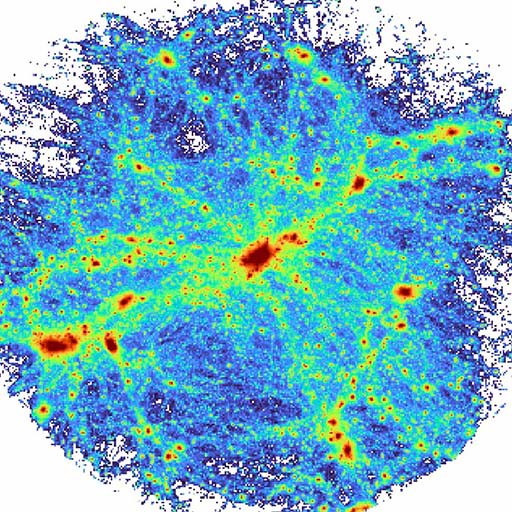Main Scientific Goals and Results
Decide the main scientific goals of ELUCID. Write introduction and papers for them.

Method of Cosmic Density Field Reconstruction
A series techniques have been devised to reconstruct the
current and initial density and velocity fields from galaxy redshift surveys.
These approaches have been applied to the SDSS DR7,
covering the redshift range $0.01 \lesssim z \lesssim 0.12$,
enabling the reconstruction of the initial conditions of the
local universe. Subsequently, forward N-body and hydrodynamic
simulations have been conducted using these reconstructed initial
conditions, leading to the accurate reproduction of the
statistical characteristics of both the cosmic web and the
halo population.
Further investigations into the galaxy
model and cosmic variance are currently being pursued,
leveraging the environmental information made available by the reconstruction.
Related Papers:
Constrained Simulations and Halo-based Models
Constrained N-body and hydrodynamic simulations have been conducted
using the reconstructed initial conditions that cover the SDSS survey
volume. The simulations encompass a variety of scales and regions,
including:
- a N-body simulation featuring a box with dimensions of $500 {h^{-1}{\rm Mpc}}^3$ and $3072^3$ particles, which covers the entire reconstructed volume of the SDSS NGC ($0.01 \lesssim z \lesssim 0.12$);
- zoom-in hydrodynamic simulations in three distinct regions: the Coma cluster, the SDSS great wall, and a large low-density region at $z\sim 0.05$;
- empirical models for galaxies based on (sub)halo data for the entire reconstructed volume.
Related Papers:
- Huiyuan Wang, et al. 2016 - the constrained N-body simulation.
- Xiaohu Yang, et al. 2016 - neighborhood abundance matching for subhalo-galaxy connection at $z \sim 0$.
- Yangyao Chen, et al. 2019 - the halo-based empirical model at all redshifts.
- Renjie Li, et al. 2022 - constrained zoom-in hydrodynamic simulations.

List of Publications Related to ELUCID
Collect papers that used ELUCID data. Record their year, title, (first) author(s), journal, arxivID, arxivURL, adsURL, abstract.